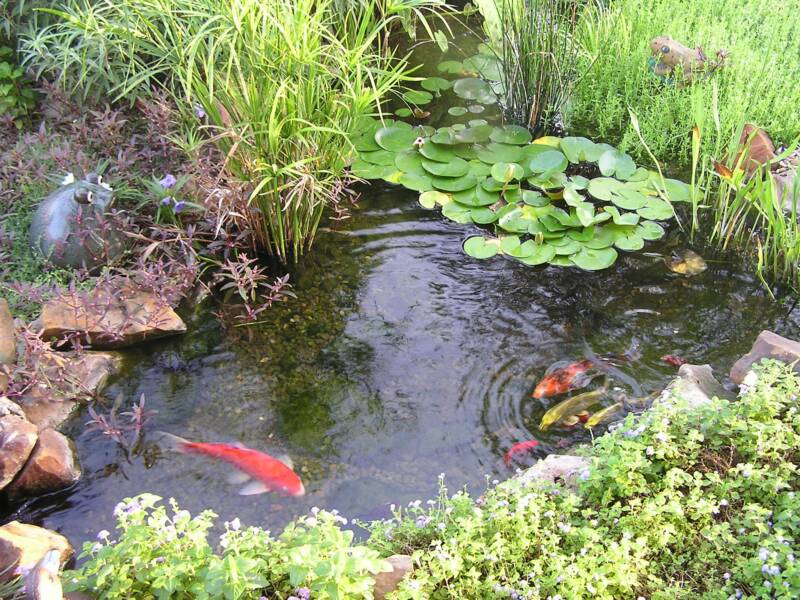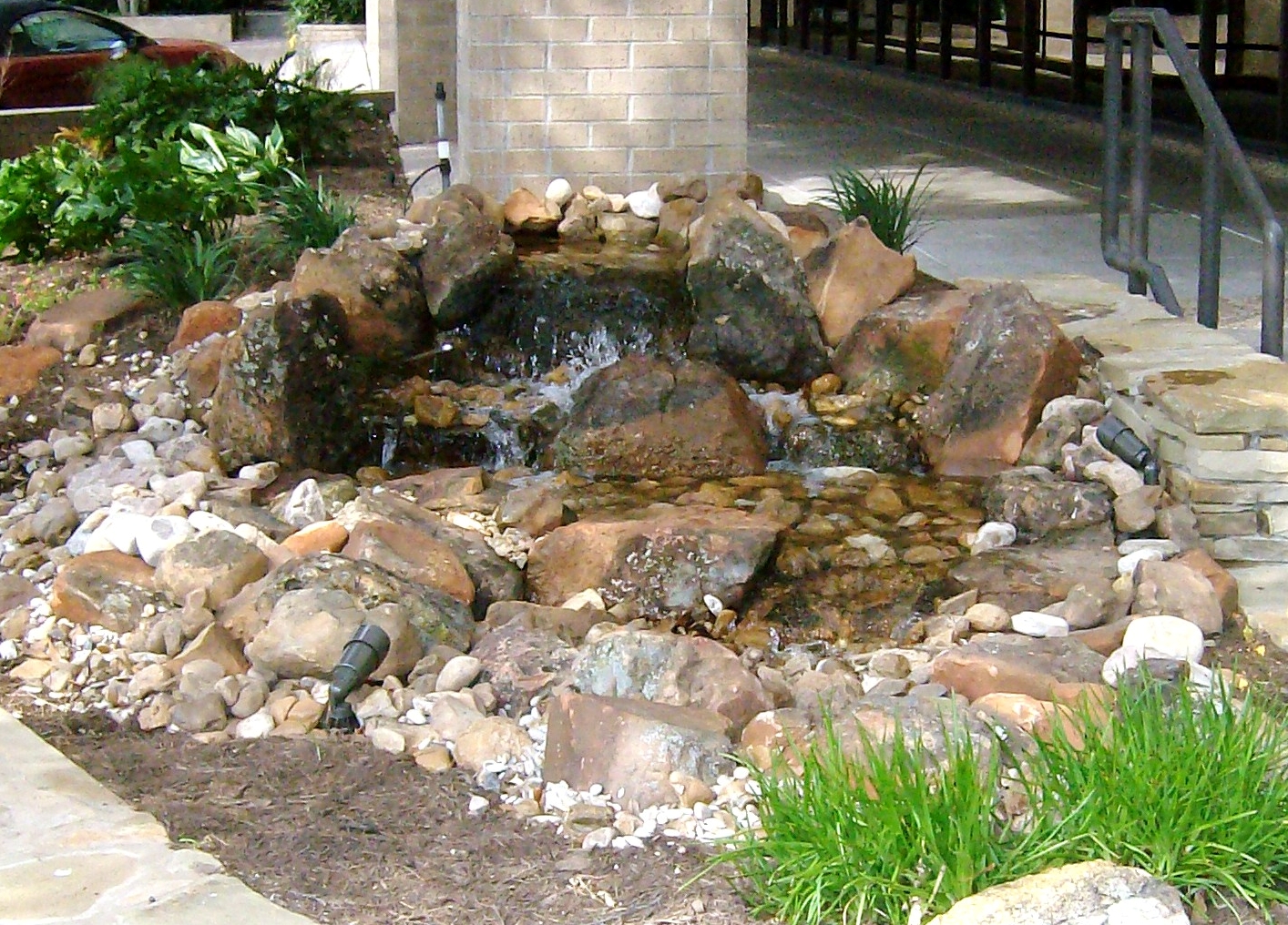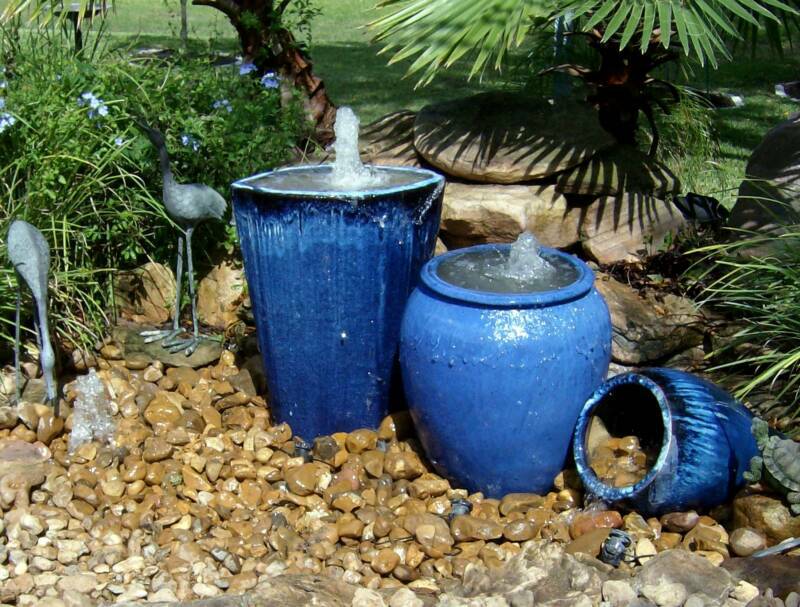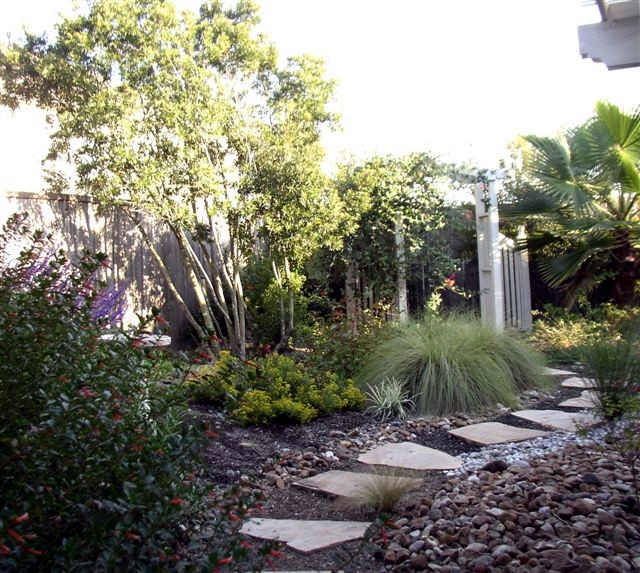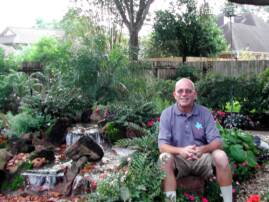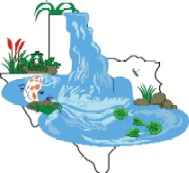


Rainwater Harvesting
Organic Ecosystem Ponds
Pondless Waterfalls
Urn and Fountain Features
Water-Wise Landscapes
Meet Your Water Feature Professionals


Texas Ponds and
Water Features
The World's Most Extreme Pond Build (part 1)
by Matt Boring
TexasPonds.com
All I can say is WOW! I've just returned from the biggest, most exciting, AWESOME event that I've ever been a part of in my ten years of building ponds. This summer, only the best of the best pond-building companies in the U.S. and Canada were invited to St. Charles, IL, “The Water Garden Capitol of the World” to participate in what would probably be the biggest pond project any of us have ever had the chance to be a part of. Several hundred pond builders from dozens of companies all across both countries showed up to work our you-know-whats off to bring to life a water garden that was beyond the imaginations of most.
In the past year, I've written an article on the green building technologies that went into the headquarters of Aquascape, Inc, the manufacturer of the pond components that I use to create natural, organic, ecosystem-based ponds. In fact Aquascape is the manufacturer of pond components most responsible for the shift from chemically-regulated ponds to organic pond ecosystems in the water gardening world over the past fifteen years or so. When you let nature's own processes manifest themselves in your water garden, you end up with a backyard pond that requires far less work and maintenance from you. In other words, when you work with Mother Nature instead of against her, she'll actually do most of the work for you!
This July, we were about to make the look of the outside of the headquarters match the technology that went into creating the green workspace inside. Capped by one of the largest sloped green roofs in America and covered with nearly all glass on the front to take advantage of natural light as much as possible, the building was crying for something to look at outside those windows besides the St. Charles airport and the highway. The water garden and patio that would be built would not only have to look great, but would also feature some of the new sustainable products being introduced this year.
Six weeks of preparation would be capped off with five days of intensive work by the invitees to make this aquatic paradise come to life. The plan included a gigantic pond, almost as large as a football field, a grotto (Look out, Hef!), a putting green, a permeable patio, and a rainwater harvesting system. The rainwater harvesting system would recirculate its water through a drilled fountain rock and would be connected to the irrigation system to water the plants in the surrounding area. That's a lot of work to happen in a small amount of time, hence only the most experienced pond builders were invited to participate.
We all met together for the first time on Saturday, July 12 to get the project's overview. There we were split into teams based on what region we hailed from. Each team would work on a specific part of the overall project for specified blocks of time. Then we would switch so that everyone could learn new things as we proceeded through the week. Interspersed throughout each day, the teams would compete in events such as wheelbarrow races, tricycle races, ice cream sandwich-eating contests,and other fun contests, which had been dubbed the “Pond Olympics” just to make sure that everyone was having fun.
After lunch on Saturday, the teams split up to go to their respective areas to begin work. The gigantic polypropylene liner had been assembled from strips of liner that had been heat-seamed together to create one solid piece that would cover the entire water feature. Fortunately, it had already been installed before we had gotten there and a few large boulders had already been placed. A concrete room had been set in place to create the 'grotto'. A small team of guys would spend the week inside this sweatbox, shaping and installing rock to mimic the inside of a real cave. The rest of us took turns installing large boulders using cranes, installing smaller, but still heavy rocks by hand, and preparing planting pockets in the bottom of the pond for the lilies and lotus that would be added just before the pond was filled. Work stopped for a while so that we could all watch the installation of a single rock that weighed about 47,000 lbs all by itself. This baby was brought in from Missouri on its own flatbed 18-wheeler. It took both a crane and a giant caterpillar forklift just to lift it up so that the 18-wheeler could pull out from under it.
One afternoon during the build, Armando and I snuck off on one of the pond tours that was being offered so that we could check out some new building techniques. One of the ponds we saw belonged to Ed Beaulieu, who actually helped build my Mom's pond in Austin and who is now Chief Sustainability Officer for Aquascape. It was fantastic! We got some great pictures and picked up a few ideas that we'd like to try next time we get a chance. Across the street from his house, his neighbors have one of the first rainwater capture systems that was ever put together using the new Rain X-Change system. You'd never know from looking at the fountain rocks in the front yard that there's 500 gallons of rainwater being stored underground.
The next morning, we went back to the grind, helping to build part of the pond's edge to look as if rock from the side had collapsed and tumbled down into the pond. Indoor classes were also being held and I was able to break away from the construction periodically to learn about some new things going on in the industry while getting a break from the heat. It's not like Texas heat, but it can still get up there especially when you're moving large rocks and standing in the sun on a black liner! Two large constructed wetlands (or bog) filters were completed to filter this large water garden and some aquatic plants and terrestrial landscaping were starting to be installed.
A twenty-foot tall wall of rock had been constructed as a diving platform into the deepest area of the pond and a 4'x20' tunnel was installed for adventurous people to swim through. The tunnel had LED lights throughout the length of it and water jets were installed to keep sediments from collecting in the tunnel and obscuring the view for people swimming through. Work had begun on the top of the grotto because over 50,000 gallons of water per hour would soon be spilling from the top of it to create the main waterfall. Everything had to be hidden and made to look natural before then. We didn't want any liner or concrete to show and give away the fact that this creation was man-made.
I could probably write a year's worth of articles about this experience, but I'll try to wrap it up in two. Unfortunately, this is where I must leave you this month. Until next time........
Happy Pondering!

